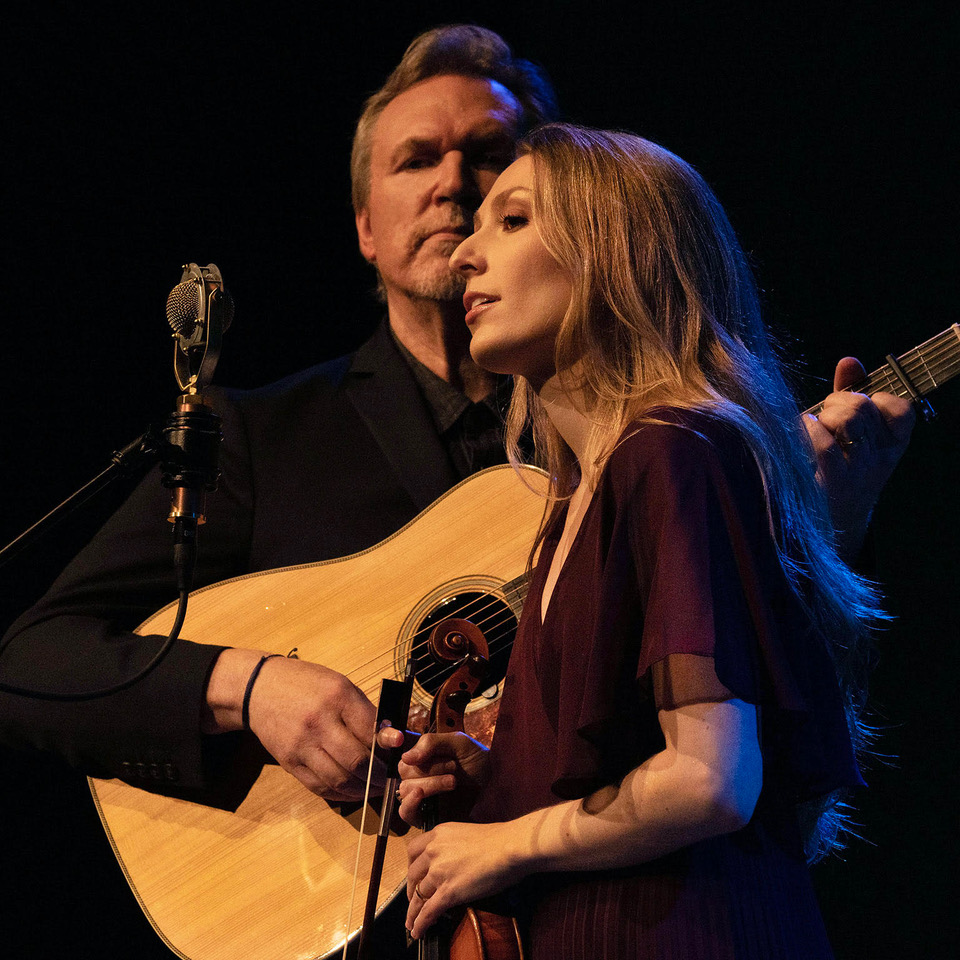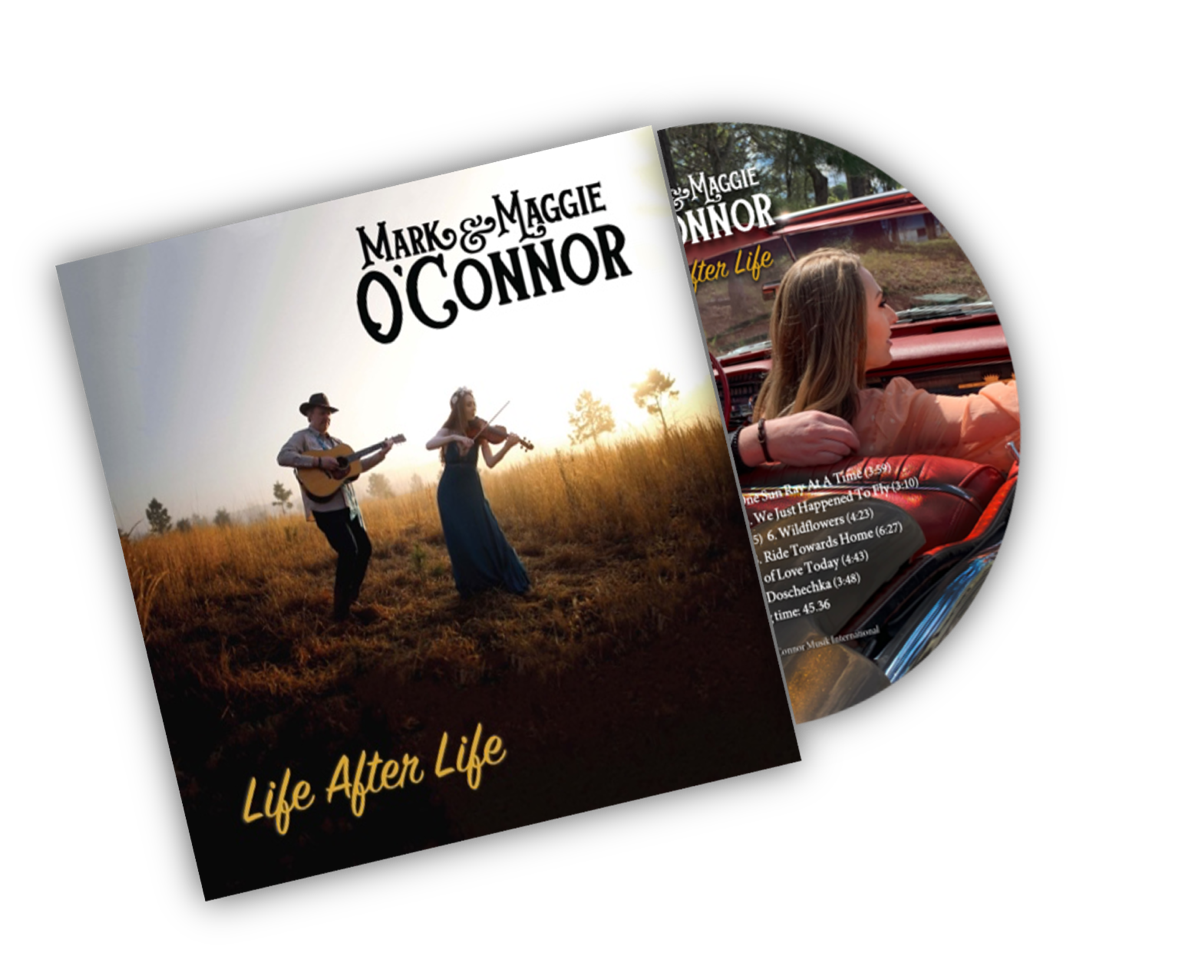Award-Winning Fiddle Players Mark and Maggie O’Connor to Perform with Glacier Symphony
Mark O'Connor loves to think of fiddling as playing the American Violin, and Maggie O'Connor finds inspiration in tracing the influences that contribute to the particular strain of violin music that has taken root here.
By Mike Kordenbrock
The award-winning violinists and married couple Mark and Maggie O’Connor have long sought to blur the boundaries between the fiddle-style of play that is their hallmark, and the classical traditions it exists alongside.
In an upcoming April 20 performance with the Glacier Symphony at the Wachholz College Center’s McClaren Hall, that extended pursuit of bringing different musical traditions together — and in effect exploring the origins of that music through performance — will continue, with the night set to include performances of the “Candide Overture,” “Appalachian Spring,” and two original compositions of Mark’s called the “Improvised Violin Concerto” and the “Double Violin Concerto.”
Both of the concertos written by Mark feature improvisation on the violin, but as Maggie pointed out, that improvisation is deeply rooted in the genres and traditions that have contributed towards the distinct sound of American fiddling. It may be as subtle as a single note here, or a bended note there, or a change in tempo, but Mark said it’s the kind of performing that it has taken a lifetime to learn how to incorporate into a concerto.
For Mark, his storied musical background goes back to his time growing up in Washington in a Seattle suburb, with a mother who was a homemaker, and a construction worker father who was both alcoholic and prone to violent outbursts. His early life also included bullying at school, and, eventually, as NPR put it in a story about his 2023 memoir “Crossing Bridges,” jealousy from other musicians. That jealousy was driven by the undeniable musical talent that Mark showed from an early age, which saw him begin by learning classical guitar, but then start fiddling after receiving a violin for his 11th birthday. Lessons from the Texas-style fiddle player Benny Thomasson, who had retired to Washington state, furthered Mark’s skill, and he would make his Grand Ole Opry debut as a 12-year-old.
As the NPR story notes, O’Connor, as a teenager, was outperforming professional musicians, and his back-to-back wins at the National Guitar Flatpicking Championships led to a new rule instituting a five-year ban for winners. Among his accolades are three Grammy Awards, and he has released dozens of albums, developed his own string music instruction method, and his performing career has seen him play with a range of musicians, including Wynton Marsalis, Yo-Yo Ma, Dolly Parton, Johnny Cash and James Taylor.
Maggie is likewise a Grammy-award-winning musician, who is originally from Atlanta. She began playing violin in a family band at the age of seven, and eventually went on to study at the Johns Hopkins University Peabody Institute. A singer and songwriter, Maggie is also a visual artist and painter, and she has played violin on some of the world’s biggest and most prestigious stages.

Mark said that he loves to think of fiddling as playing the American Violin, and Maggie described finding inspiration in tracing the influences that contribute to American music, and the particular strain of violin playing that has taken roots here.
“It takes the world’s cultures to create American music,” Maggie said. “…It’s almost like a history lesson, a geography lesson. We have Cajun fiddling, we have the hoedown, the Texas Old Time fiddling, there’s Celtic, there’s Canadian fiddling, that has more of a Celtic sound, and the history of just how the Celtic music came over, and then it mixed with the African culture. That’s what really created American fiddling.”
What that amounts to, is that in the eyes of the O’Connors, playing the American Violin can become a kind of journey through American history and culture.
The “Double Violin Concerto,” Mark said, was something he originally composed for the famed Italian-American violinist Nadja Salerno-Sonnenburg, and it’s a piece that he said incorporates influences from jazz, swing, and blues music.
Playing Nadja’s part will be Maggie, who characterized the piece as virtuosic, and emphasized the gymnastic-like interplay between her part and Mark’s once the concerto reaches a cadenza section in which both musicians will have a chance to shine. But one of the key features of that cadenza, and likewise the “Improvised Violin Concerto,” is that Mark will be improvising his lines.
He called it a moment of “exploration,” in which the orchestra that is performing with them will sit back. Overall, he said it’s a piece written to feature strings playing “the musical language of Americana” and also gives the symphony a chance to carry the tune.
The moment of improvisation in the “Double Violin Concerto,” is the feature of the entirety of O’Connor’s “Improvised Violin Concerto.”
“And so, every time the piece is performed, it is different than the last time,” Mark said. “Every measure is different each time. And it is something that is a little bit of exploration, but it turned out to be a hit. It’s one of those things where it takes a lifetime to figure out a creative idea, and then when you’re finally ready to do it, you have enough up your sleeve that you can pull it off. That’s one of those things. I waited for my ninth concerto to compose it, and it is one of the most unique pieces out there.”
The O’Connors regularly tour, perform and compose music together, and their April 20 show in Kalispell will come less than a week before the official release of their new album “Life After Life.”
The album features a mixture of original vocal songs, guitar and fiddle playing, and covers of some of their favorite artists, including Dolly Parton, Stevie Wonder and Jason Isbell. The album’s songs are, broadly speaking, mostly about affirmation and hope, Mark said. The new music also explores the theme of love. Some songs are about watching a child grow up, or making a leap of faith. One song conveys what horses have contributed to humanity. “Life After Life” also features a rearrangement of a Ukrainian folk song. Another track is about dealing with the different chapters that come with life, and another deals with tests of faith, and reemerging from the depths of struggle that some people experienced during the COVID-19 pandemic.

The pandemic actually played a significant role in “Life After Life,” as the O’Connors said during that period they began playing live-streamed once-weekly shows called “Mondays with Mark and Maggie,” which they kept up for 70 consecutive weeks.
It was a chance to get feedback from their audience, and to perform with a little more bravery and creativity.
“We were workshopping those songs in front of some of our biggest fans who were tuned in,” Mark said. “It was neat because they knew us as well as anybody, and we were sort of reaching for new places, kind of with their permission. And we love that process.”
The Glacier Symphony will perform with Mark and Maggie O’Connor Saturday, April 20, at 7:30 p.m. at FVCC’s Wachholz College Center. For more information, including to purchase tickets, go to glaciersymphony.org.